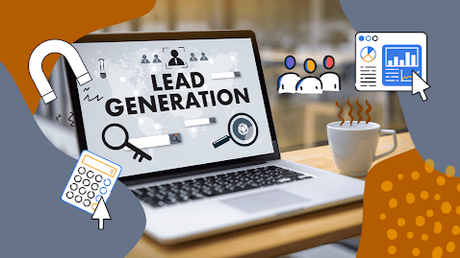
B2B lead generation is the backbone of a thriving business, as it helps in establishing connections with prospective clients and cultivating valuable business relationships. The process often requires creativity, precision, and consistency, and it becomes even more effective when combined with advanced techniques like website visitor recognition. This approach helps B2B companies identify, track, and engage with potential leads right as they visit the company's website. By utilizing website visitor recognition, businesses can significantly increase their lead generation success rate and enhance their overall sales strategy. Here's how.
Understanding Website Visitor Recognition
Website visitor recognition is a technology that enables businesses to identify visitors who browse their website, even if those visitors don't fill out a contact form or explicitly share their information. This recognition is achieved through various tools and techniques that track a visitor's IP address, cookies, and behaviors on the website.
Most website visitor recognition solutions provide insights into:
- The name of the company (based on IP address tracking)
- Visitor behavior, such as pages viewed, duration of visit, and specific actions taken
- Geolocation data
- Other information sources, such as LinkedIn profiles, to further identify and qualify the lead
For companies in B2B lead generation, this data can be a game-changer. By recognizing website visitors early in the buyer's journey, companies can proactively target these leads with relevant information and nurture them into customers.
Why Website Visitor Recognition Matters in B2B Lead Generation
In the B2B space, customers often undergo lengthy decision-making processes, meaning it can take multiple interactions over time before they commit. Website visitor recognition provides the early insight needed to guide these visitors through their journey. Here are some of the biggest advantages:
-
Identify High-Value Prospects Early
Instead of waiting for a visitor to make the first move, website visitor recognition allows you to detect potential clients as they land on your site. This includes high-value prospects you might not have known were interested otherwise. -
Increase Lead Conversion Rates
When you're able to monitor a lead's behavior, you can quickly determine which products, services, or solutions interest them the most. By tailoring outreach based on this behavior, your messaging will align more closely with the lead's needs and interests, improving conversion rates. -
Personalize and Prioritize Outreach Efforts
Not all visitors are equally valuable. Website visitor recognition tools often allow you to segment visitors based on their behaviors and demographic information. By understanding which prospects are most likely to convert, you can prioritize those leads for your sales team and ensure they focus on high-value opportunities. -
Shorten the Sales Cycle
When you recognize and engage with website visitors early, you can often move them more quickly through the sales funnel. This shortens the sales cycle and helps you reach revenue goals faster.
Implementing Website Visitor Recognition in Your B2B Lead Generation Strategy
If you're interested in leveraging website visitor recognition, here's how to effectively implement it within your lead generation strategy:
Step 1: Choose the Right Tool
A range of website visitor recognition tools is available, each with varying capabilities. Some of the popular options include:
Consider what information you want to capture, how easily the tool integrates with your CRM, and your budget when choosing a tool.
Step 2: Integrate the Tool with Your CRM
Connecting your visitor recognition tool with your CRM (e.g., Salesforce, HubSpot, or Zoho) is crucial for creating a smooth flow of information. When integrated, recognized visitors can automatically become leads within your CRM. This integration allows your sales and marketing teams to access the lead's history, ensuring cohesive communication.
Step 3: Set Up Lead Scoring and Segmentation
Most tools allow you to set up lead scoring based on behavior, such as which pages a visitor viewed, how many times they visited, and what actions they took. By assigning scores to these actions, you can better prioritize leads. Segment these leads further by industry, company size, and other demographic data to ensure a personalized approach.
Step 4: Create Targeted Content and Campaigns
Once you understand which pages a visitor explored, you can better craft email marketing campaigns and retargeting ads that speak to their interests. Content plays a big role here; for instance, if a visitor spent a significant amount of time on a product page, sending a follow-up email with a case study or whitepaper related to that product can help keep their interest high.
Step 5: Implement Retargeting Strategies
Visitors who leave your site without converting are valuable potential leads. Retargeting ads can help bring them back, reminding them of your brand and guiding them to revisit and engage further. Retargeting strategies are highly effective when tailored to the specific pages and products a visitor viewed.
Step 6: Engage Directly and Appropriately
While website visitor recognition provides valuable insights, it's important to use this information tactfully. When reaching out to recognized visitors, personalize your approach based on the data collected without making them feel monitored. A friendly introductory email that aligns with their recent browsing behavior can help build trust and interest.
Measuring Success and Adjusting Strategy
To make the most of website visitor recognition, measure the outcomes of your initiatives consistently. Metrics to track include:
- Conversion rates of leads generated through visitor recognition
- Sales cycle length for recognized leads versus traditional leads
- Customer acquisition cost (CAC) reduction
Use these insights to optimize your lead generation strategy. For example, if you notice high conversion rates for visitors who view your blog, you may want to invest more in producing high-quality content or making popular blogs more visible on your site.
Overcoming Challenges in Website Visitor Recognition
While website visitor recognition is highly effective, it does come with challenges, such as:
-
Data Privacy Regulations
Ensure compliance with GDPR, CCPA, and other data privacy laws. Clearly state your data collection practices and always offer opt-out options. -
Accuracy of Data
Website visitor recognition is often limited to company-level data rather than individual-level insights. Keep in mind that the insights you gather might require some level of manual verification.
Conclusion
Website visitor recognition is a valuable tool in any B2B lead generation strategy. By identifying potential clients early, you can engage them with relevant, personalized messaging that nurtures them down the sales funnel. With the right approach, website visitor recognition can provide the competitive edge you need to boost your lead generation efforts and drive revenue growth.
Implementing this strategy may require some initial investment in tools and training, but the returns-shortened sales cycles, higher conversion rates, and better targeting-are worth the effort for any business looking to thrive in the competitive B2B landscape.

